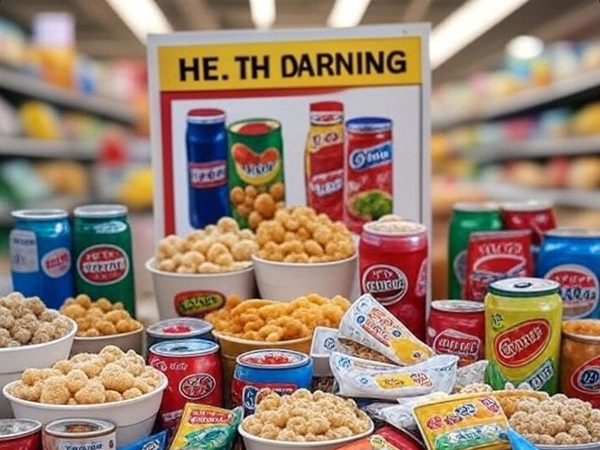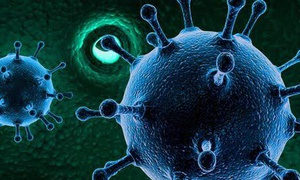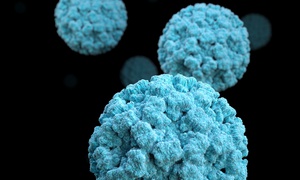Samuel Adisa
Student @ Akungba
The Truth About Ultra-Processed Foods: Are They Slowly Killing Us?"

<p>The debate over ultra-processed foods (UPFs) has gained significant traction in recent years, as mounting evidence suggests they may pose serious risks to human health. The question of whether ultra-processed foods are "slowly killing us" is not just provocative but also a critical public health concern. This response will explore the nature of ultra-processed foods, their impact on health, the mechanisms behind their effects, and the broader societal and economic implications, while also addressing counterarguments and potential solutions.
</p><p>What Are Ultra-Processed Foods?
</p><p>Ultra-processed foods are defined by the NOVA classification system, a framework developed by researchers at the University of São Paulo to categorize foods based on the extent and purpose of industrial processing. UPFs are formulations of ingredients, many of which are not typically found in home kitchens, that undergo extensive industrial processing and often include additives like artificial flavors, colors, emulsifiers, and preservatives. Examples include sugary beverages, packaged snacks, instant noodles, ready-to-eat meals, and many fast foods.
</p><p>Key characteristics of UPFs include:
</p><p>High levels of processing: They are often made from refined ingredients (e.g., high-fructose corn syrup, hydrogenated oils) and subjected to multiple industrial processes.
</p><p>Additives: Emulsifiers, stabilizers, and artificial sweeteners are common to enhance shelf life, texture, or palatability.
</p><p>Low nutritional value: UPFs are typically high in added sugars, unhealthy fats, and sodium, while being low in fiber, vitamins, and minerals.
</p><p>Hyper-palatability: Engineered to be highly palatable, often leading to overconsumption.
</p><p>
In many countries, UPFs now dominate diets. For example, in the United States, studies estimate that UPFs account for nearly 60% of caloric intake among adults and over 65% among children. In the United Kingdom, the figure is similarly high, around 50-60%. This shift toward UPFs has coincided with rising rates of obesity, diabetes, and other chronic diseases, raising questions about their role in public health crises.
</p><p>The Health Impacts of Ultra-Processed Foods
</p><p>The link between ultra-processed foods and adverse health outcomes is supported by a growing body of research. Below are the key health concerns associated with UPF consumption:
</p><p>1. Obesity and Weight Gain
</p><p>UPFs are often calorie-dense and engineered to be hyper-palatable, encouraging overeating. A landmark 2019 study by Kevin Hall and colleagues at the National Institutes of Health (NIH) provided direct evidence of this. In a controlled trial, participants consuming an ultra-processed diet consumed about 500 more calories per day and gained an average of 0.9 kg over two weeks, compared to those on a minimally processed diet, who lost weight. The mechanisms include:
</p><p>Rapid digestion: UPFs are often low in fiber and high in refined carbohydrates, leading to quick blood sugar spikes and hunger shortly after eating.
</p><p>Reward system activation: Ingredients like sugar and fat stimulate the brain’s reward centers, potentially leading to compulsive eating behaviors akin to addiction.
</p><p>
2. Type 2 Diabetes
</p><p>The high glycemic load of UPFs, driven by refined sugars and starches, contributes to insulin resistance over time. A 2019 meta-analysis in The BMJ found that higher consumption of UPFs was associated with a 30-60% increased risk of type 2 diabetes. The frequent blood sugar spikes caused by UPFs strain the pancreas, impairing insulin production and sensitivity.
</p><p>3. Cardiovascular Disease
</p><p>UPFs are often high in trans fats, sodium, and added sugars, all of which are linked to heart disease. A 2021 study in The Lancet found that high UPF consumption was associated with a 30-60% increased risk of cardiovascular disease and mortality. Additives like emulsifiers may also disrupt the gut microbiota, contributing to inflammation and atherosclerosis.
</p><p>4. Cancer
</p><p>Emerging evidence suggests a link between UPFs and cancer. A 2018 study in The BMJ followed over 100,000 participants and found that a 10% increase in UPF consumption was associated with a 12% increased risk of overall cancer, particularly breast cancer. The exact mechanisms are unclear but may involve additives, high sugar content, or contaminants formed during processing (e.g., acrylamide in fried snacks).
</p><p>5. Mental Health
</p><p>Recent research has explored the impact of UPFs on mental health. A 2022 study in Public Health Nutrition found that high UPF consumption was associated with increased risks of depression and anxiety, potentially due to nutrient deficiencies (e.g., omega-3 fatty acids, B vitamins) and gut microbiota disruption caused by additives.
</p><p>6. All-Cause Mortality
</p><p>Perhaps the most alarming evidence comes from longitudinal studies. A 2019 study in The Lancet found that a 10% increase in UPF consumption was associated with a 14% higher risk of all-cause mortality. This reflects the cumulative impact of UPFs on multiple organ systems and chronic disease pathways.
</p><p>Why Are Ultra-Processed Foods Harmful?
</p><p>The harm caused by UPFs stems from both their composition and the way they are consumed. Key mechanisms include:
</p><p>Nutritional Deficiencies: UPFs often displace nutrient-dense foods like fruits, vegetables, and whole grains. This leads to deficiencies in essential nutrients like fiber, vitamins, and antioxidants, which are critical for maintaining health.
</p><p>Additives and Contaminants: Many additives in UPFs, such as emulsifiers (e.g., polysorbate 80) and artificial sweeteners (e.g., aspartame), have been linked to gut dysbiosis, inflammation, and metabolic dysfunction in animal studies. Additionally, processing methods like high-temperature frying can produce carcinogenic compounds like acrylamide.
</p><p>Disruption of Satiety: UPFs are often low in protein and fiber, which promote satiety. Their soft textures and high palatability encourage rapid eating, bypassing natural hunger cues.
</p><p>Gut Microbiota Imbalance: The gut microbiome plays a critical role in health, influencing everything from metabolism to mental well-being. UPFs, with their additives and low fiber content, can alter the gut microbiota, reducing beneficial bacteria and promoting inflammation.
</p><p>Socioeconomic Factors: UPFs are often cheap, convenient, and heavily marketed, making them disproportionately consumed by lower-income groups. This exacerbates health disparities, as these populations may have less access to fresh, whole foods.
</p><p>
The Other Side: Are UPFs Inherently Harmful?
</p><p>Not everyone agrees that ultra-processed foods are inherently dangerous. Some arguments in defense of UPFs include:
</p><p>Convenience and Accessibility: UPFs are affordable and have long shelf lives, making them a practical choice for people with limited time, resources, or access to fresh foods. For example, canned soups or frozen meals can provide nutrition in food deserts.
</p><p>Nutrient Fortification: Some UPFs, like fortified cereals or plant-based milk alternatives, are enriched with vitamins and minerals, addressing specific deficiencies (e.g., vitamin D, iron).
</p><p>Not All UPFs Are Equal: The NOVA classification groups all ultra-processed foods together, but not all are equally harmful. For example, a store-bought hummus or whole-grain bread may be classified as ultra-processed but still contain nutritious ingredients.
</p><p>Personal Responsibility: Critics argue that the focus on UPFs shifts responsibility away from individual dietary choices and portion control. Moderation, they claim, is key.
</p><p>
However, these arguments are often overshadowed by the broader evidence. While some UPFs may have nutritional benefits, the majority are engineered for profit, not health, and their widespread consumption correlates strongly with negative health outcomes.
</p><p>Societal and Economic Implications
</p><p>The rise of UPFs is not just a health issue but a societal and economic one. Key factors driving their prevalence include:
</p><p>Food Industry Practices: The food industry invests heavily in making UPFs cheap, tasty, and convenient. Aggressive marketing, especially to children, normalizes their consumption. For example, a 2020 study estimated that the food industry spends $14 billion annually on advertising UPFs in the U.S. alone.
</p><p>Globalization and Urbanization: As populations urbanize, reliance on convenient, shelf-stable foods increases. In low- and middle-income countries, UPF consumption is rising rapidly, contributing to a "nutrition transition" where traditional diets are replaced by processed ones.
</p><p>Health Inequities: UPFs disproportionately affect marginalized communities, who may lack access to fresh foods or the time to cook. This contributes to higher rates of obesity and chronic diseases in these groups.
</p><p>Healthcare Costs: The chronic diseases linked to UPFs place a massive burden on healthcare systems. In the U.S., obesity-related illnesses cost an estimated $150 billion annually, much of which is tied to diets high in UPFs.
</p><p>Conclusion
</p><p>The evidence is clear: ultra-processed foods, as currently formulated and consumed, are a significant driver of chronic disease and premature mortality. While they offer convenience and affordability, their high content of sugars, unhealthy fats, and additives, combined with their displacement of nutrient-dense foods, makes them a public health concern. The question "Are ultra-processed foods slowly killing us?" may sound alarmist, but the data suggests a real and urgent problem.
</p><p>That said, the issue is complex. Not all UPFs are equally harmful, and factors like socioeconomic constraints and food access must be considered. Solutions require a multifaceted approach, combining policy changes, industry reform, and individual action.By prioritizing whole foods, advocating for systemic change, and fostering greater awareness, we can mitigate the harm of UPFs and move toward healthier, more sustainable diets.
</p><p>
</p><p>
</p><p><br></p><p><br></p><p><br></p><p>
</p><p>
</p><p>
</p><p>
</p><p>
</p><p>
</p><p>
</p><p>
</p><p>
</p><p>
</p><p>
</p><p>
</p><p>
</p><p>
</p><p>
</p><p>
</p><p>
</p><p>
</p><p>
</p><p>
</p>
Other insights from Samuel Adisa
Referral Earning
Points-to-Coupons
Insights for you.






 65
65






























































Comments